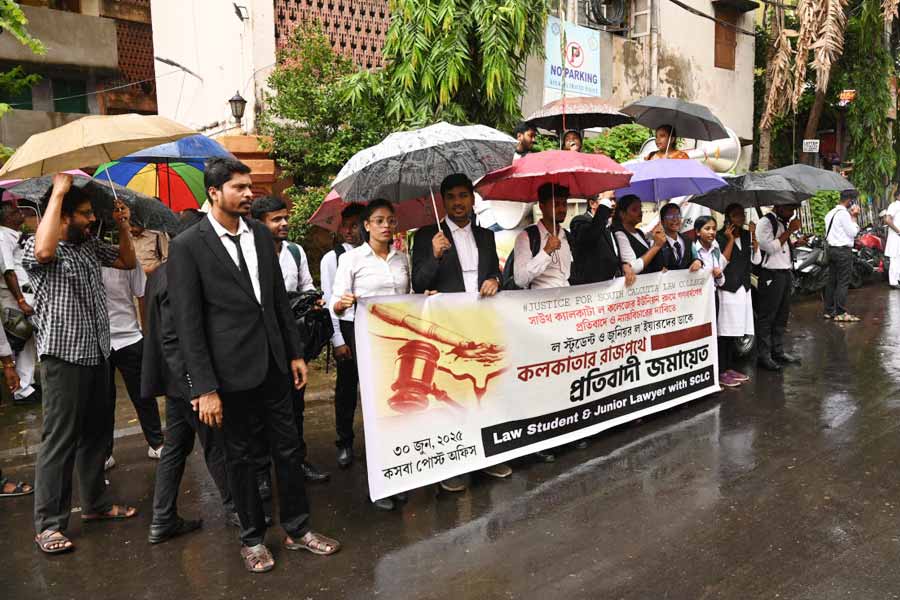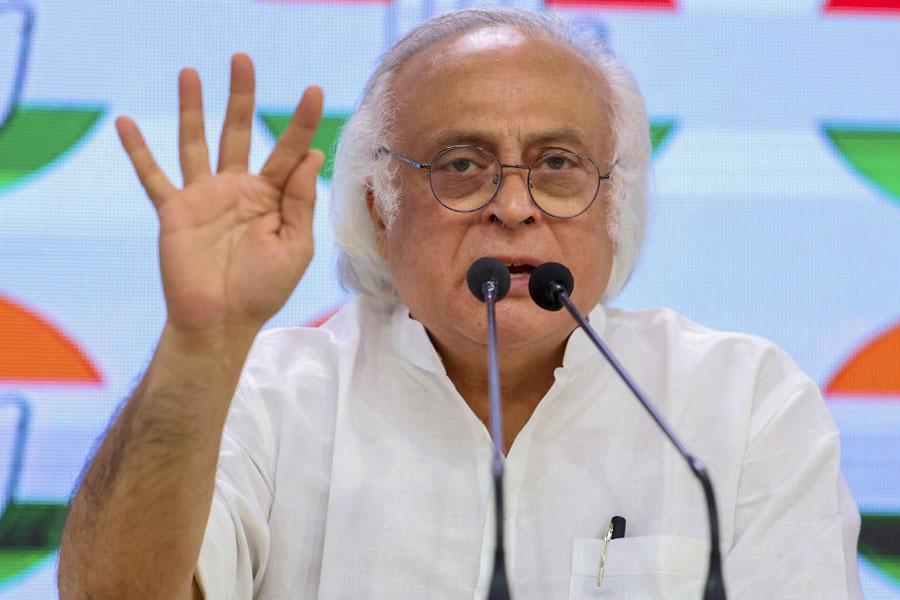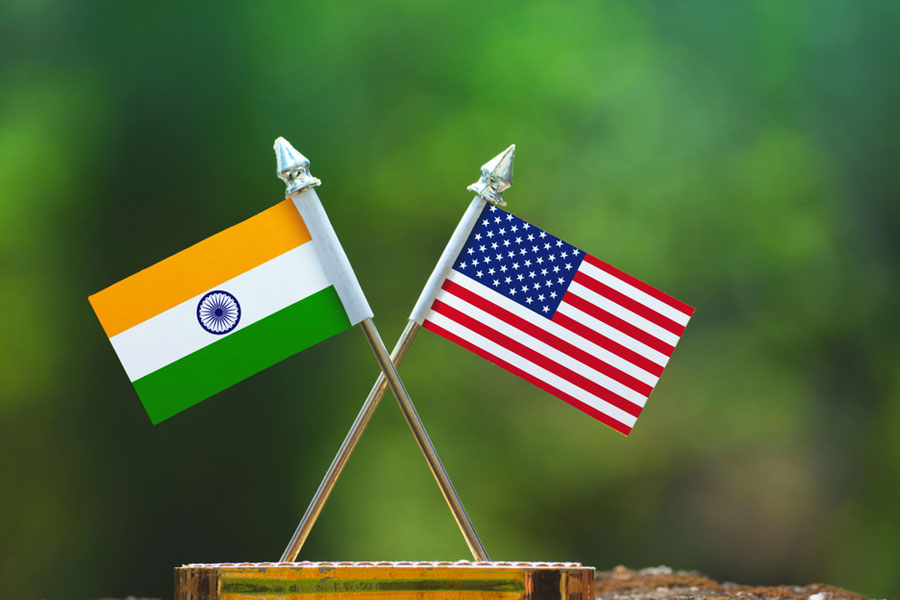 |
Garbo died in 1990 at the age of 84, having lived in determined seclusion in New York for half a century but she was well aware of her unique place in Hollywood history. Though The Swedish Sphinx had been at the height of her fame and glamour in the 1920s and 1930s — more than two decades before the Suchitra Sen-Uttam Kumar phenomenon captivated Bengal — she received a 1955 Honorary Oscar “for her unforgettable screen performances” and in 1999 was ranked as the fifth greatest female star of all time by the American Film Institute.
She moved from Sweden to Hollywood after signing with Metro-Goldwyn-Mayer, and made the transition from silent movies to “talkies”, where her husky, Swedish-accented voice was a compelling selling point. She had affairs with many men, most passionately with her leading actor John Gilbert, but did not marry him or anybody else. She played the seductive World War I spy in Mata Hari (1931) and a Russian ballerina in Grand Hotel (1932). She never won an actual Oscar although she was nominated for Best Actress for her roles in Romance and Anna Christie in 1930, Camille in 1936, and Ninotchka in 1939.
It will take PhD students in cinema to identify parallel and contrasting themes with such evocative Suchitra movies as Sober Upore (1955), Sagarika (1956), Pathe Holo Deri (1957), Harano Sur (1957), Deep Jwele Jaai (1959), Saptapadi (1961) and others.
 |
For most people, the Garbo legend has endured since her shock retirement in 1941 following a single critical review. Yet, curiously, Derek Malcolm, one of Britain’s best loved critics, formerly of the Guardian and now with the Evening Standard in London, appears to hold Suchitra in slightly higher regard. Malcolm has always had a soft spot for Bengali cinema, having been the one who introduced Satyajit Ray to an audience at the National Film Theatre in London after the Indian director had first caused a stir at Cannes with Pather Panchali in 1956.
“Some of the mystery of Garbo is gone,” argued Malcolm. “People have forgotten why she was mysterious. Her films are revived regularly at the National Film Theatre and on television.” He believes there was an element of calculation in the way Garbo severed her relationship with journalists. “She did not like the press. She kept her private life private. She was bisexual and had a lot of affairs with women at a time this could not be made public. She used one of the tricks people have forgotten and which today’s Hollywood people could learn. She realised the less she gave interviews and the more she remained intensely private, the more it made people want her and the more mysterious she became.”
Perhaps that is a little unfair to Garbo but about Suchitra — and Bengali cinema in general — Malcolm, who is admittedly known to be fiercely pro-Indian (though not always pro-Bollywood), is almost lyrical.
 |
He dismisses the suggestion that Bengali cinema has not really made a mark in the west. “Bengali cinema is recognised in the west, much more so than the cinema from south India. Bengali cinema is recognised because of Satyajit Ray and (Ritwik) Ghatak and Rituparno Ghosh. We also recognise Bengali cinema because of the colonial connection and because people suddenly start speaking English in the middle of a film.”
Though he cannot remember the titles of all the Suchitra films that he saw in the 1950s and 1960s, he remembers their effect and the actress: “She was very, very beautiful. She had this ‘still’ quality. She did not need to do a lot of ‘acting’.”
He went back to the comparison with the Swedish siren: “Some people have called her the Indian Garbo because of her extreme beauty, allied to a great dignity.”
Perhaps he was thinking of Suchitra’s daughter and granddaughters when he commented: “Those who have followed her have a lot of catching up to do. Suchitra Sen was someone who had charisma which was quite apart from her beauty. She ‘underplayed’ the acting and, of course, looked wonderful.”
Sangeeta Datta, who has lectured in London on the role of women in Indian cinema as well as helped in the making of Chokher Bali (2003) and Brick Lane (2007), said some stars — Sharmila Tagore, Shabana Azmi, Rekha among them — chose not to withdraw from public life. “Suchitra Sen,” she summed up, “is a one-off.”
Suchitra acted in Hindi movies as well, which brought her into contact with Dev Anand, who mentions her briefly in his autobiography, Romancing With Life, which was launched and widely promoted last year in Germany, Britain and America.
 |
In the book, Dev Anand talks of a trip to the Kulu Valley in 1960 and writes: “I had gone there earlier to participate in the shooting of Bambai Ka Babu, with Raj Khosla directing, and Suchitra Sen, the doe-eyed dusky beauty and immensely popular star of Bengal starring opposite me.”
Possibly she was “dusky” in comparison to the fairer-complexioned actresses from the north but Dev Anand’s attempts to maintain a friendship with his Bengali co-star when he later visited Calcutta were rebuffed. That might explain his view that some stars, such as himself, handle growing old rather better than others.
“I did try to meet her,” he disclosed, adding he had done a second movie, Sarhad (1960), with her (though she is better known for having starred as Paro alongside Dilip Kumar in Devdas in 1955). “But people discouraged me, ‘She doesn’t meet anyone,’ and after a while I gave up.”
The British academic and author of a number of books on Hindi cinema, Rachel Dwyer, who is Professor of Indian Cultures and Cinema at the School of Oriental and African Studies in London, has examined why stars such as Garbo and Suchitra choose to live in the shadows.
“There may be two major reasons,” she suggested. “One is that some stars, usually very beautiful, hate seeing themselves grow old. Some probably find it harder than the rest of us to deal with these changes. However, others may want to escape their own beauty and the image of them created by publicity in the media or made by their studios and the public’s concept of them created by the roles and the way they were presented in the films themselves. Some may want to conceal something such as their private lives or their sexuality.”
Dwyer said: “Garbo wasn’t a true recluse in the sense she went out in public, unlike Howard Hawks. I think the true recluse may well suffer from mental illness rather than making a decision to do — or not to do — something. It’s also a paradox of film that the star is always present — on film — but absent because they’re not actually there. Maybe this makes us even more intrigued when they become reclusive in real life while we still have their screen images.”
American and British playwrights are given to writing plays based on the imagined encounters of two icons who may not actually have met. A play conjuring up a conversation between Greta Garbo and Suchitra Sen would be able to draw on fertile territory.
They would have a laugh, the two girls, sitting, say, in a coffee house in Shyambazar or the Groucho Club in London, as they recount how they had fooled the press.
Garbo was alleged to have remarked, “I want to be alone,” which she later corrected to, “I never said, ‘I want to be alone.’ I only said, ‘I want to be let alone.’
There is all the difference.”











